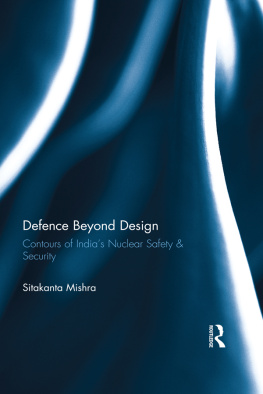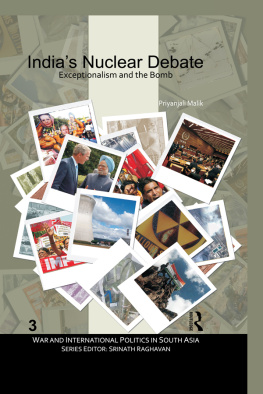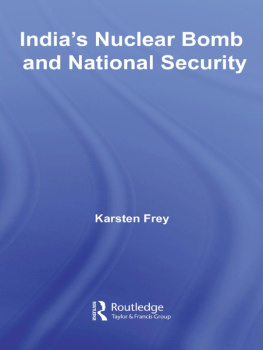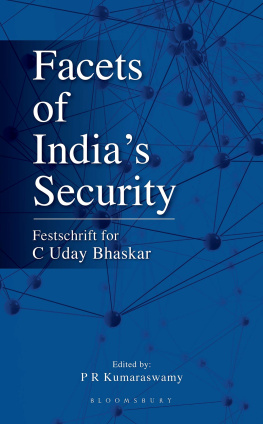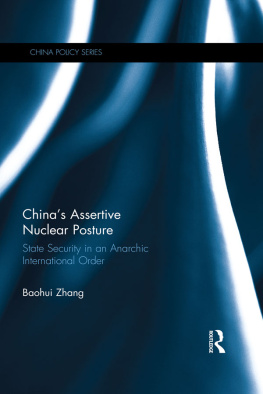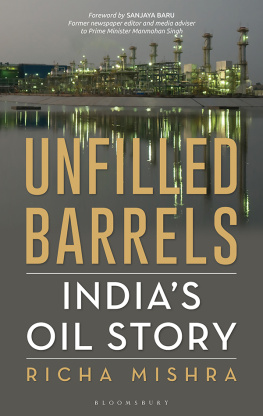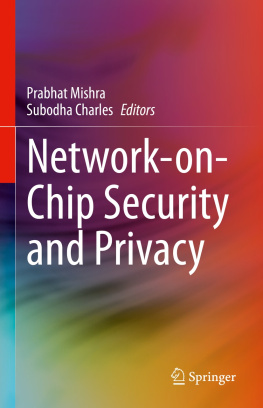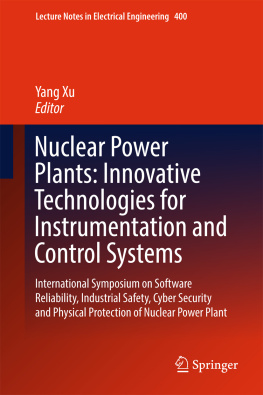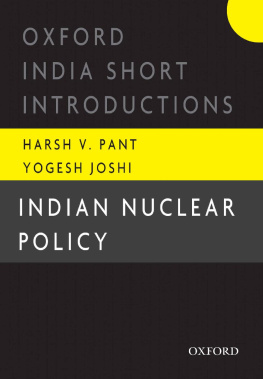First published 2017
by Routledge
2 Park Square, Milton Park, Abingdon, Oxon OX14 4RN
and by Routledge
711 Third Avenue, New York, NY 10017
Routledge is an imprint of the Taylor & Francis Group, an informa business
2017 Centre for Air Power Studies, New Delhi and KW Publishers Pvt Ltd
All rights reserved. No part of this book may be reprinted or reproduced or utilised in any form or by any electronic, mechanical, or other means, now known or hereafter invented, including photocopying and recording, or in any information storage or retrieval system, without permission in writing from the publishers.
Trademark notice: Product or corporate names may be trademarks or registered trademarks, and are used only for identification and explanation without intent to infringe.
Print edition not for sale in South Asia (India, Sri Lanka, Nepal, Bangladesh, Afghanistan, Pakistan or Bhutan)
British Library Cataloging in Publication Data
A catalogue record for this book is available from the British Library
Library of Congress Cataloging in Publication Data
A catalog record for this book has been requested
ISBN: 9781138243774 (hbk)
ISBN: 9781315272092 (ebk)
Typeset in Palatino
by KW Publications
Centre for Air Power Studies
Vision
To be an independent centre of excellence on national security contributing informed and considered research and analyses on relevant issues.
Mission
To encourage independent and informed research and analyses on issues of relevance to national security and to create a pool of domain experts to provide considered inputs to decision-makers. Also, to foster informed public debate and opinion on relevant issues and to engage with other think-tanks and stakeholders within India and abroad to provide an Indian perspective.
Science cannot change anything if people do not pay head. Today, nuclear science is facing such a fate for various reasons. The societal taboo over the invisible radiation, delay in reaching the benefits of the atom to the grassroots, its high-technology nature that is beyond the comprehension of average citizens, the out of proportion portrayal of sporadic disasters, etc. have contributed in making nuclear science an awesome discourse for the common man. Consequently, nuclear projects have to face pockets of furious opposition fostered by vested interests, making them the subject of politics and psychology, rather than physics. This study attempts to deconstruct some of these untoward notions involving nuclear technology, and Indias tryst with nuclear energy within the global discourse.
The term Defence Beyond Design is a suggested paradigm to look beyond the common method of ensuring nuclear safety and security based on the Defence By Design concept where high level safety features are built-in during the design phase of the plant to deal with postulated threats, if they ever occur. A serious concern, as learnt from the Fukushima disaster, is how to manage the unimaginable risks. Literally, there can be no absolute safety or security, and there can be no perfect parameter to judge how much safety is safe enough. However, the capability to imagine, and absolute preparedness to meet all contingencies comprise the key to restore confidence in nuclear technology. We must acknowledge that nuclear energy has not failed; it is we who have failed to utilise it, with the appropriate technology and strategy. A more robust defence (safety-security) system to enhance management and technical capability by looking beyond the conventional standard operating procedures to deal with all risks is the conceptual prescription of this study.
The nine chapters that follow delve into different aspects of Indias nuclear energy debate. Admittedly, most of the contents and facts have been gathered from open sources, official reports, opinions; and many arguments and information have been reproduced verbatim to bring to the fore the status and the prevailing debate undiluted. Given the fast evolving nature of the Indian nuclear energy programme, it is extremely difficult to include all the new developments in this volume. Also, this study does not claim to have brought out anything hitherto unknown or new on Indias nuclear energy programme or nuclear safety-security discourse. It is only an attempt to coherently compile, and articulate on, the intricate issues involving Indias nuclear energy debate, the evolving trends, and the systems in place, to ponder over them. This might help to address some international scepticism over Indias preparedness and safety-security standards, and also it may help educate the interested domestic public.
By the time this manuscript was getting ready, the Nuclear Threat Initiative (NTI) Index 2016 had been published, ranking India, as usual, low, and categorising it among countries like Pakistan, Iran, and North Korea. of India to a higher level in their subsequent Index, as they now had more positive information on Indias system, they expressed scepticism, especially in view of the integrity of the Index; frequent adjustments or revisions in the parameters of the Index, they said, would raise questions about its integrity and reliability, and there would be more demands from other countries to revisit their status as well.
In respectively specific attention is given to domestic public concerns on the siting of reactors, waste management, and public acceptance of nuclear energy. They highlight a number of contentious issues and the inconclusive debates in these respects. The sporadic opposition witnessed in pockets to new nuclear projects during the last few years cannot be considered Indias anti-nuclear movement per se. Neither is there any green movement in the country like in some of the European countries where political parties are formed on this basis. Opposition to nuclear projects in the country largely emanates from the fear of project-induced displacement, affecting the livelihoods of people. There are vested interests who try to propagate an anti-nuclear ideology, though they have largely remained unsuccessful. So far, neither has any political party subscribed to the anti-nuclear ideology, nor has any party taken it up anti-nuclear as its ideology. The intermittent support and sympathy extended by some parties comprises only the vote bank politics. For example, the Aam Admi Party (AAP) tried to woo the Kudankulam protesters and offered support to the Peoples Movement Against Nuclear Energy (PMANE) leader Udayakumar, for contesting the Assembly election. This temporary courtship ended with Udayakumars defeat and subsequently leaving the AAP over lack of clear-cut policy.
Despite the post-Fukushima scepticism and vehement anti-nuclear pressure the world over, India has managed to sign nuclear deals with around two dozen countries and industrial houses. Reluctant partners like Japan and Australia have finally understood Indias genuine cause and interest in nuclear energy. The world examines the network of nuclear deals that India has signed and the dual challenge of maintaining its record of a responsible state with advanced nuclear technology while taking along the domestic public in its nuclear energy expansion drive.



